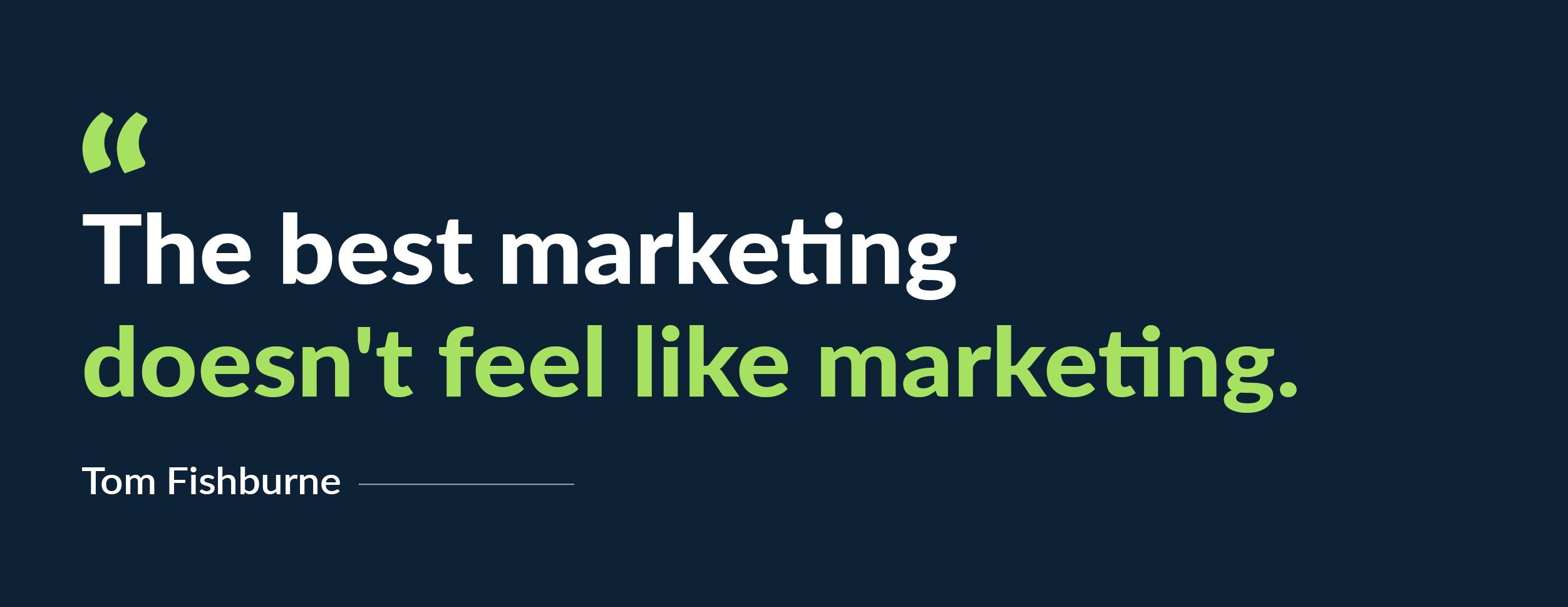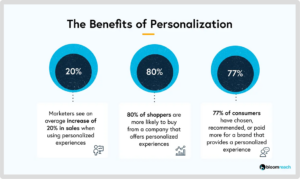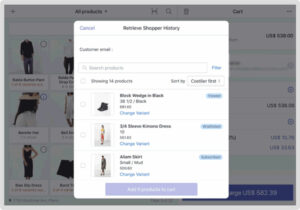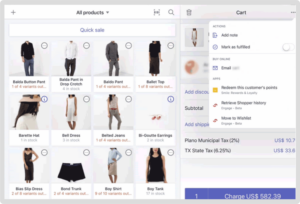What wouldn’t a marketer give to get preemptive knowledge of how a customer is likely to respond to an e-commerce marketing email? After all, knowing what your customers want and respond to is half the battle won.
This report has all the insights you’re looking for.
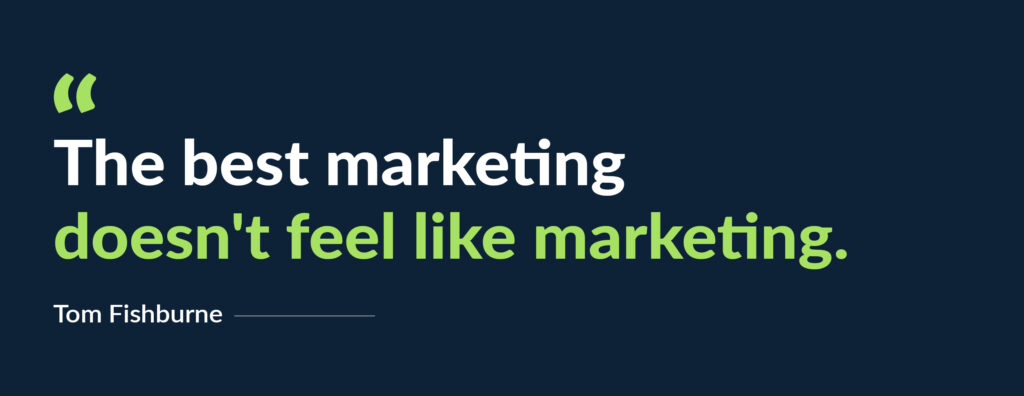
We studied over 17 million wishlist related e-commerce marketing emails sent by successful e-commerce businesses to derive insights into how shoppers respond to different types of nudges or email notifications.
Our first insight from observing the best email marketing campaigns for Shopify stores? Wishlist-linked notifications a.k.a. nudges converted 2X more than the average ecommerce email benchmarks.
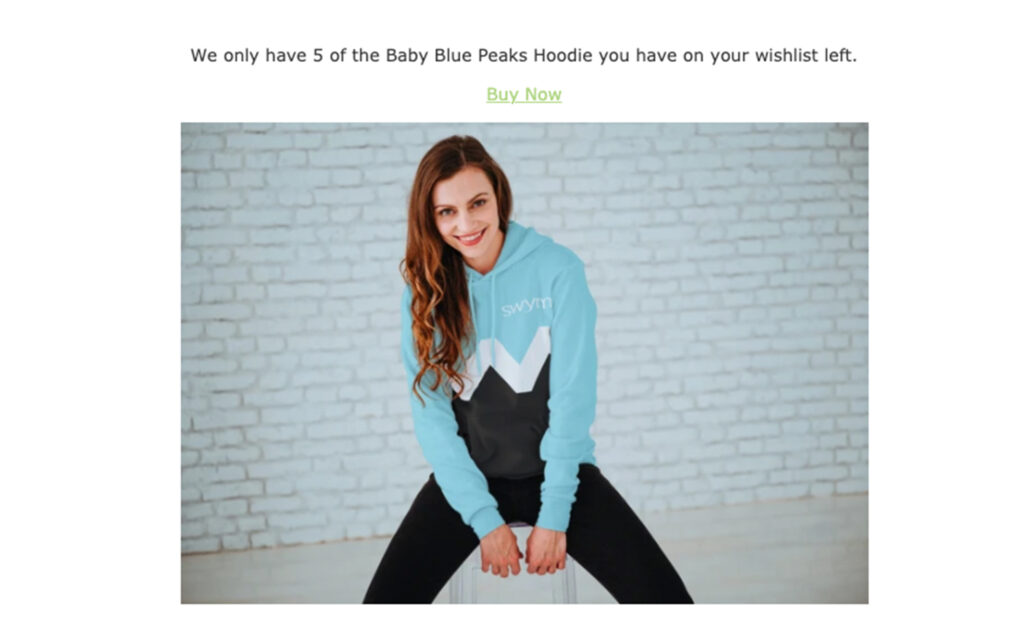
Of course, that’s just the tip of the iceberg. A deeper dive into customer response data uncovered best email marketing practices that Shopify e-commerce marketers can apply to their own marketing strategies.
Are you ready to email smarter and convert faster? Let’s bite into those insights.
But first, a bit more on what nudges or wishlist-linked emails are.
Why you should care about wishlist-linked email notifications, a.k.a. Nudges
Nudges, also known as triggers or notifications, are prompts that encourage customers to take a desired action. In the context of marketing your Shopify store, nudges can be used to increase customer engagement and conversion rates.
There are many different types of nudges you can use in e-commerce email marketing, but some of the most common include:
| NUDGE CATEGORY | GOAL | UNDERLYING MESSAGE |
| Reminders | Remind customers about items they wishlisted or saved for later but didn’t purchase | Hey, remember these products you liked? Don’t you want to buy them? |
| Back in stock alerts | Notify customers about their favorites that have been restocked | Your favorite is back in stock. Buy it before it is gone again! |
| List sharing emails | Allow customers to share their wishlists | 1) This is what your friend, relative, or co-worker likes—why don’t you buy it for them! 2) This is what your friend, relative, coworker has their eye on—see anything you like?! |
| Price drop alerts | Alerts a customer about a wishlist item becoming available at a lower price | If the price was holding you back earlier, nothing is holding you back now! |
| Low stock alerts | Induce a sense of urgency and allow the customer to take action in time. | Buy your favorites now, before they fly off the shelves! |
Each type of nudge lets you target different customer sentiments and achieve specific goals. Indeed, e-commerce email marketing is a feelings game and this is why nudges need to be part of your Shopify marketing strategy.
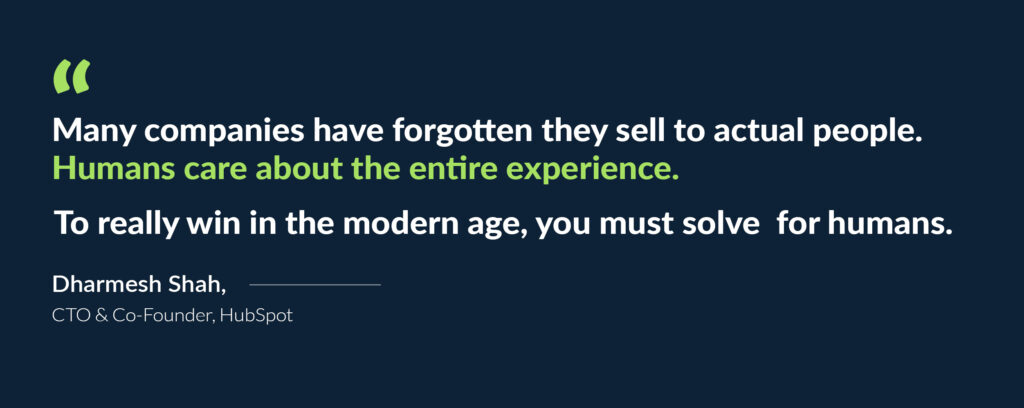
For example, you can send out a Shopify low-stock alert to drive Fear-Of-Missing-Out (FOMO). Similarly, you can enable and encourage wishlist sharing to benefit from social proof or customer advocacy. Or send a price drop alert to appeal to price-sensitive buyers. You get the picture!
If you’re looking for the best way to bring your shoppers back and market your Shopify store, these are strategies you must try.
Top Performing Nudges To Try
Here are some of the insights we uncovered from the automated email campaigns we studied:
- The types of nudges used most widely across industries are inventory-related alerts: Back In Stock alerts, Wishlist Sharing and Low Stock alerts
- List-Sharing is the most effective type of nudge, with an average conversion rate of over 4.42%
Pro Tip: You can aim to drive this number even higher if you use influencer marketing for your Shopify store, and get influencers to share their wishlists. - Back In stock and Coming Soon alerts also prove to be effective, with average conversion rates of 1.2% and 0.77% each
- Reminders seem to be comparatively less effective, with average conversion rates of 0.09%
| Name of notification | True average of conversion rate across industries |
| Saved for later reminder | 0.46% |
| Wishlist reminder | 0.09% |
| Back in stock alert | 1.23% |
| Back in stock reminder | 0.01% |
| Back in stock acknowledgement | 0.17% |
| Coming soon alert | 0.77% |
| Wishlist sharing | 6.04% |
| Low stock alert | 0.07% |
| Price drop alert | 0.16% |
| Saved for later sharing | 4.42% |
Industry-wise Nudge Response Trends
Let’s get granular! While some types of notifications (like the shared lists) display similarly spectacular response rates across industries, other nudges perform differently within different sectors.












It is interesting to note that certain types of alerts perform better for some businesses versus others. This variance is based on factors such as product type and brand attributes.
For example, Sporting Goods saw a whopping 3% conversion rate for Shopify back-in-stock alerts, while Office Supplies, Baby Products and Electronics, on average, had a conversion rate close to 2%. This indicates that back-in-stock alerts seem to work best for businesses that can be classified as “shopping goods” or “specialty goods”, where shoppers have spent a significant time researching a product and arriving at their decision, or where they’re looking for a one-of-a-kind product or a brand-specific product. The common aspect in these cases is the customer’s willingness to wait till a specific item is restocked to purchase because they’re invested in it.
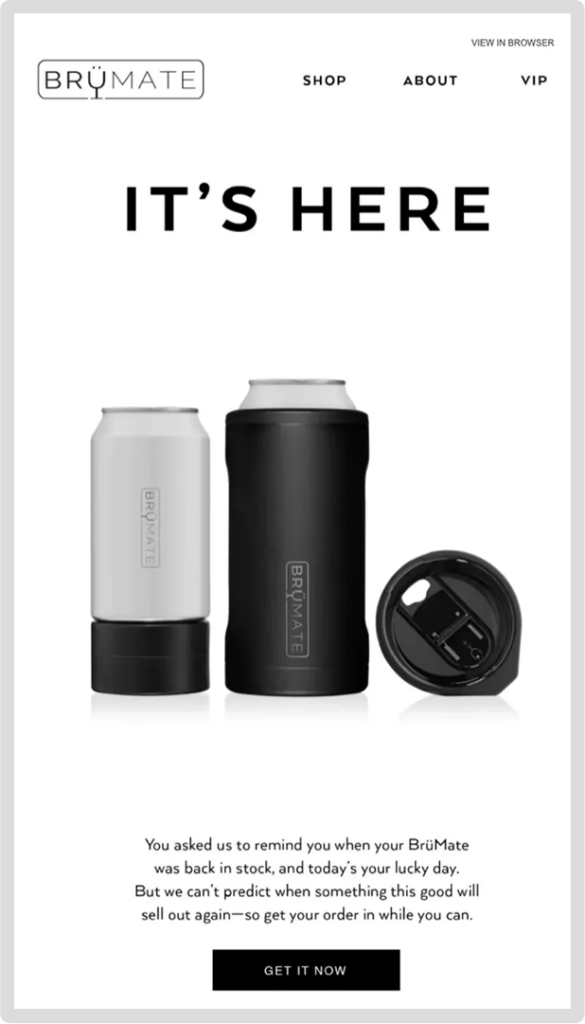
Customers might be willing to wait for a pair of Air Jordans to be back in stock, but might not display the same patience for a pack of diapers or a stack of printer paper. They are unlikely to hold off on their emergency buys because of a sense of loyalty to or comfort with a brand or retailer.
That’s why “convenience goods” such as Food & Beverage or Hobby-linked Supplies see lower conversions with Back In Stock alerts.
The click rates for each type of notification across industries yielded interesting findings too:












- Price-drop linked e-commerce marketing emails got the highest number of clicks in categories where products were either impulse buys (such as Apparel, Accessories, Jewelry, and Toys) or regular repeat buys (such as Office Supplies or Food & Beverage). This can happen because of two reasons:
- For impulse buys, customers are typically price-sensitive when it comes to such types of purchases and are looking for great deals, and a price drop alert feeds into this mindset.
- For regular purchases, a great deal could incentivize customers to stock up
- Low stock alerts had higher click rates for some types of Shopping Goods such as Home Decor & Furniture, Accessories & Hobbies, and Toys & Games. This is because the primary function of low stock alerts is to create a sense of FOMO, and this type of e-commerce marketing email works best for products that are either “limited edition/seasonal” or are produced in limited batches.
Actionable best practices to apply to your e-commerce marketing
Social proof wins:
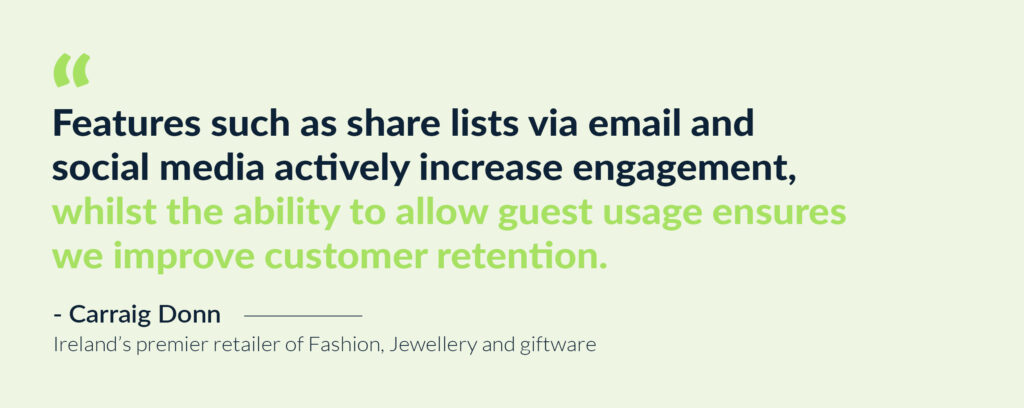
The effectiveness of list share emails indicates that “word of mouth” marketing, albeit done via email, is the most definitive way of getting new customers.
How to play this card:
You can encourage your customers to share their wishlists through campaigns such as Win Your Wishlist or by running a separate email campaign to your wishlist users simply encouraging them to share their wishlists.
Popflex, a workout apparel brand, added over 90,000 customers to their email subscriber base with their Black Friday Cyber Monday Wishlist giveaway campaign. And over half of these were new customers.
Contact your success manager if this is something you’d like to do for your brand via Swym!
Anticipation breeds buying:
The high conversion rates of coming soon and back-in-stock alerts indicate the importance of building a loyal customer base through retention strategies. Customers want messages from their favorite brands to be tailored to them. 60% of consumers say they’ll become repeat customers after a personalized shopping experience — this includes things like telling them that the trending jeans they’ve been searching for are coming soon, and letting them set a pre-order alert. (This might also prevent them from simply hopping off your site and buying somewhere else, provided shoppers aren’t in a hurry and already feel a degree of loyalty to your brand.)
How to play this card:
Swym’s nudges/notifications are a great way to make this happen. You can enable the triggers that make sense for your shoppers, and then Swym will take care of the rest. There is no need to intervene once the triggers are set up.
Segmentation ensures success:
While choosing what type of e-commerce email marketing triggers to set up, pay close attention to the buying behaviors of your customers and their relationship with your product. Are they willing to wait for your products? Are they looking for discounts? Are they keen on new collections/new releases?
Segment your customers based on an understanding of what drives them, and then apply the right trigger to see the difference. This pre-emptive effort substantially improves your chances of conversion when you run an email campaign on Shopify.
How to play this card:
Create customer segments using Swym data analytics mined from events, such Wishlisted products, Restock alert requests. Merge with data you have from other types of campaigns you’ve run for further segmentation and personalization.
Additionally, you can also use Swym reports to further segment customers based on their activity. For example, you can run a loyalty-based messaging campaign for the most active customers, and maybe a “We Miss You” discount for customers who have created wishlists but were inactive for over 90 days.
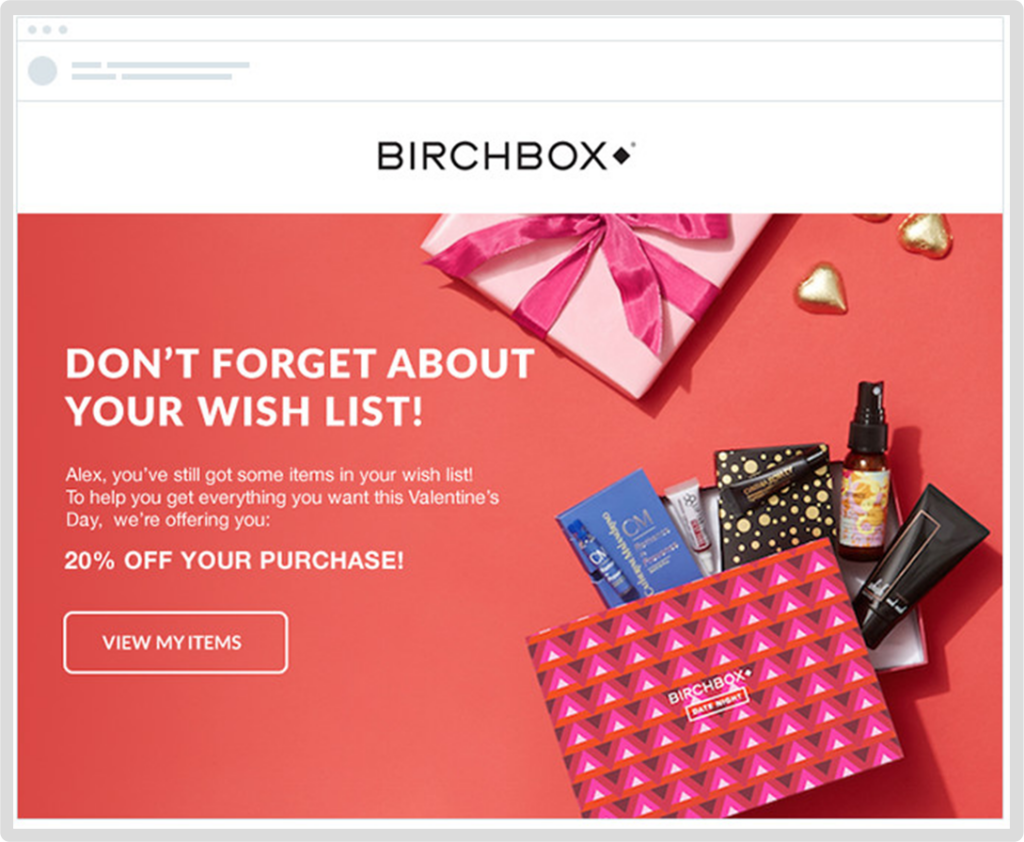
Automation creates ease
While personalization as a concept sounds great, it can be quite a task to do manually. Creating segments based on wishlisted products, and then remembering to trigger alerts based on changes in the price or inventory of that product can be time consuming and error ridden. But with Swym, this is automated for you – where the types of alerts you set up go out in an automated fashion based on changes in inventory or price.
You can also use Shopify’s email automation features to create e-commerce marketing emails in minutes and use sales-focused templates that showcase products, prices checkout links, and more, directly from your store. You can also choose other email marketing apps for your Shopify store from a wide variety of other email marketing apps that integrate seamlessly with your Shopify store like ConvertKit MailChimp, Klaviyo, Brevo, Yotpo and ActiveCampaign among many others. When you get these apps from the Shopify store i.e. when you get Klaviyo for Shopify, for example, contact information collected by Shopify is automatically added to Klaviyo.
How to play this card:
You can set up powerful triggers with Swym, and easily send personalized emails at scale through email automation.
You can leverage Shopify’s email automation features using your Shopify email and other integrated e-commerce email marketing apps. Easily end out a variety of emails and messages such as Shopify Welcome Emails, Abandoned cart, Back-in-stock emails, Cross-sell emails, Newsletters, Pop-ups, Price drop emails, Product recommendations, and other Newsletters for your Shopify store, SMS campaigns, Subscriptions, Upsell emails, among other types.
Trigger your audiences the right way!
Understanding how your customers respond to different types of e-commerce marketing emails is critical to boosting conversions. It’s the difference between your customer taking the desired action, versus sending you straight to spam.
We hope this report helps you better understand and utilize the power of personalized notifications. Get started by setting up automated reminders and personalized email notifications with Swym, and benefit from the higher conversion rates.
Plug in Swym to your e-commerce store in minutes and start converting today! Sign up here.

